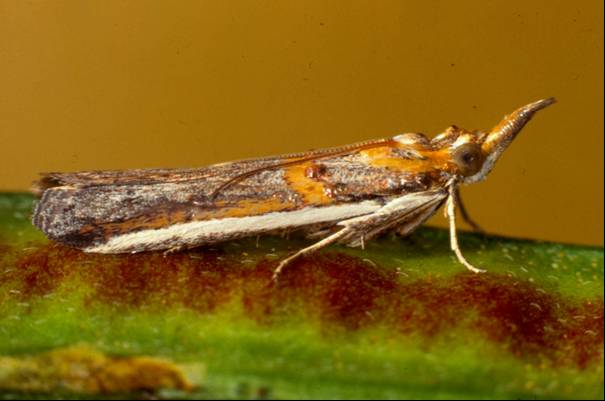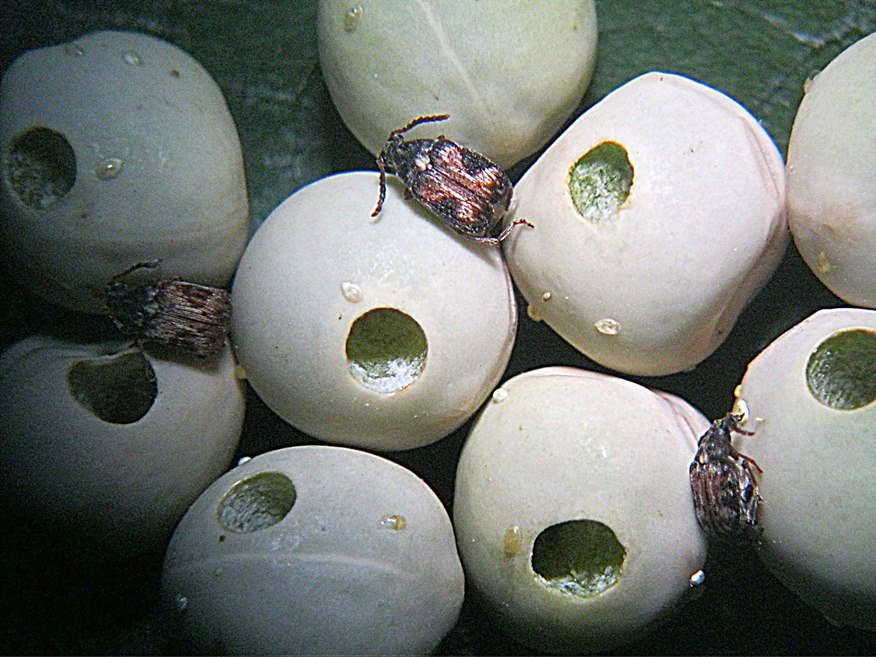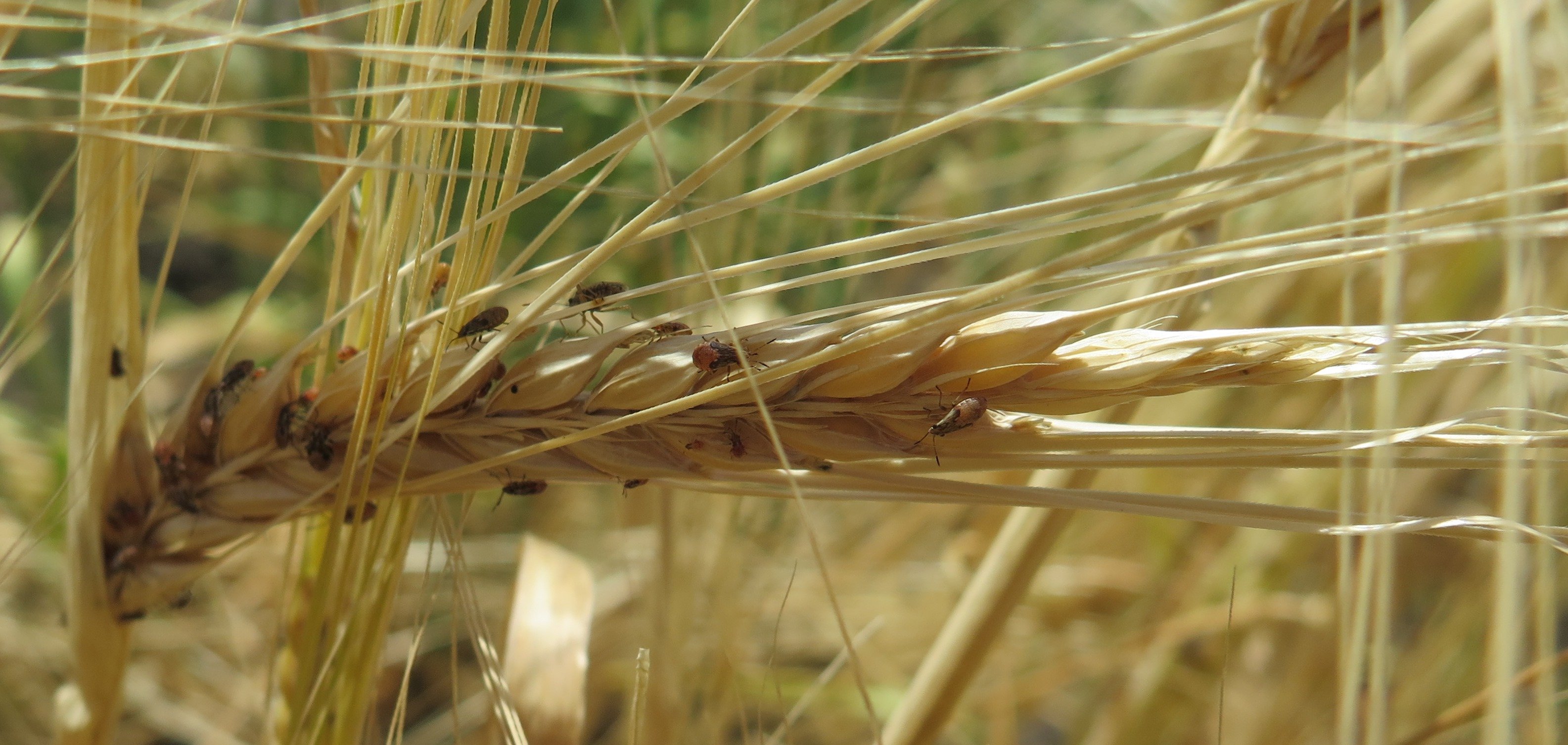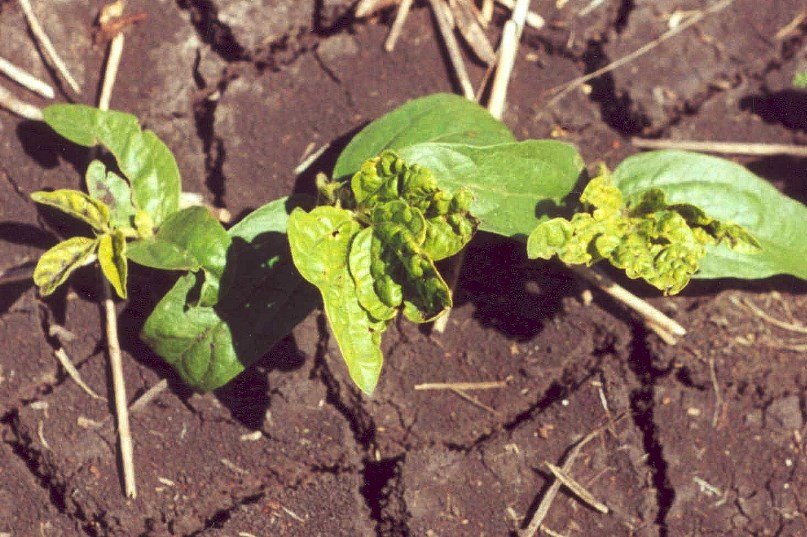A significant etiella outbreak was recently reported in pod-filling mungbean in the Moree region of North Western NSW. In this particular crop, it is estimated that etiella larvae have infested pods on 50% of plants. Etiella eggs, at low densities, were also recently observed in an early flowering crop near Bungunya (west of Goondiwindi, Qld).
There have been two reports recently of cowpea bruchid activity, with these pests infesting pulse crops in the field prior to harvest. The first report concerned the cowpea bruchid (weevil) Callosobruchus maculatus in field peas from Goondiwindi. The bruchids were noticed at intake and continued to breed in an untreated grain sample post-harvest. This clearly indicated they were not pea… Read more »
Rutherglen bug (RGB) numbers in canola stubble are again high in some fields. These infestations pose a risk to neighbouring crops, either through damage to establishing summer crops or contamination of unharvested winter crops. Both the canola and adjacent crops warrant monitoring for RGB infestation and movement out of the canola field. If large number of nymphs move into adjacent fields with seedling… Read more »
There have been several reports of seedling thrips in spring mungbean crops in the Goondiwindi region. Seedling thrips (Thrips tabaci) are also known as winter cereal thrips or cotton seedling thrips. The thrips move out of winter cereals when these start to dry off into new green spring growth such as mungbean, navy beans or cotton. Spring planted crops, especially… Read more »
Leaf mining caused by Agromyzid flies has recently been reported in wheat crops in the Goondiwindi/ Toobeah (late August) and Quirindi (late September) regions. Consultants reported their initial impression was that the damage symptoms, pale stripes on the leaves, resembled old stripe rust infections. However on closer inspection, the leaves were actually a windowed with frass visible inside the translucent… Read more »
As canola sets and matures pods, and spring temperatures rise, there are a number of caterpillar pests that are active in this crop. Along with helicoverpa there are diamondback moth larvae (Plutella xylostella) and cabbage white butterfly larvae (Pieris rapae) in crops. It is critical that you can distinguish the species, and be familiar with their respective thresholds, in order… Read more »
As temperatures start to warm up there are a number of insect pests becoming active and causing crop damage. This post provides an overview of current and potential issues for field crops.
Crops are most susceptible to pest damage at the seedling stage. Pests feeding on seedlings can reduce plant establishment, increase weed competition, delay flowering and lower yields. In some cases there may be a need for re-sowing. Most of the establishment pests found in the northern region are soil-dwelling insects. Soil insects may be difficult to detect prior to sowing…. Read more »
Paul Grundy, Adam Quade and Richard Lloyd have established 8 trial sites in the Spring Ridge area to evaluate the impact of simulated aphid damage on flowering canola. Treatments simulate aphid infestations that limit flowering and pod set. Low, medium and high intensity damage applied in replicated trials. Assessments to made on time to maturity, plant architecture, yield, and quality.
Insect management in grain crops workshop for advisers and growers (September 2014) These 1-day workshops for advisers and growers will explore effective and sustainable management strategies, with a focus on pests of local significance. The morning sessions are indoors, and the after lunch sessions in the field (weather permitting) to discuss practical aspects of pest identification, scouting and management. Wednesday… Read more »




